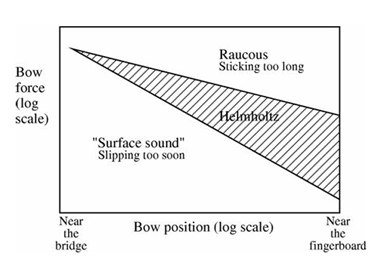From Control Systems Technology Group
Jump to navigation
Jump to search
|
|
| Line 33: |
Line 33: |
| [http://cstwiki.wtb.tue.nl/index.php?title=Viotar/Hardware_Design Hardware Design] | | [http://cstwiki.wtb.tue.nl/index.php?title=Viotar/Hardware_Design Hardware Design] |
|
| |
|
| [http://cstwiki.wtb.tue.nl/index.php?title=Viotar/Interview_met_Eindhovens_vioolbouwe_Hendrik_Zick Interview met Eindhovens vioolbouwer Hendrik Zick] | | [http://cstwiki.wtb.tue.nl/index.php?title=Viotar/Background_information:_Interview_with_Hendrik_Zick Background information: Interview with Hendrick Zick] |
|
| |
|
| [http://cstwiki.wtb.tue.nl/index.php?title=Viotar/_Ways_To_Exite_The_String Ways to exite the string] | | [http://cstwiki.wtb.tue.nl/index.php?title=Viotar/_Ways_To_Exite_The_String Ways to exite the string] |
Revision as of 21:54, 24 January 2011
|
|
Working of the violin
William Schattevoet
David Duwaer
Eric Backx
Arjan de Visser
|
|
|
|
|
|
|
Working of the violin
 Figure 1: A complete Helmholtz motion. In contrary with the guitar, a violin does not produce a stationary wave and the motion of the vibration is not linear. When a violin is excited properly, a Helmholtz motion occurs. When Helmholtz occurs the string moves in a “V” pattern, also called Helmholtz corner. This means that the string is devided into 2 straight segments that intersect with a sharp angle. This angle is moving while the string is excited. In figure 1 can be seen what the string of the violin looks like when in Helmholtz motion.
The Helmholtz motion occurs due to two phenomena at the contact surface between bow and string called “stick” and “slip”. During the “stick” the string sticks to the bow and during the “slip” the string slips over the contact surface. “Stick” occurs when the Helmholtz corner is between the bow and the hand, “slip” occurs when the Helmholtz corner is between the bow and the bridge of the violin. What makes playing a violin hard, is that Helmholtz only occurs when the string is excited with exactly the right combination of bow force and bow speed. When the bow force is to little the string will slip to much, when on the other hand the bowing force is too much, too much stick will occur. The position of the bow, in regard to the bridge, is also an important factor for the motion of the string.
The area in which Helmholtz occurs whit a constant bowing speed is visualized in a so called Schelling diagram (figure 2). In the Schelling diagram it can be obtained what the maximum and minimum bowing force are at a certain bowing speed in order to reach a Helmholtz motion. This is a function of the distance between the bow and the bridge.
 Figure 2: Schelleng diagram.
|

